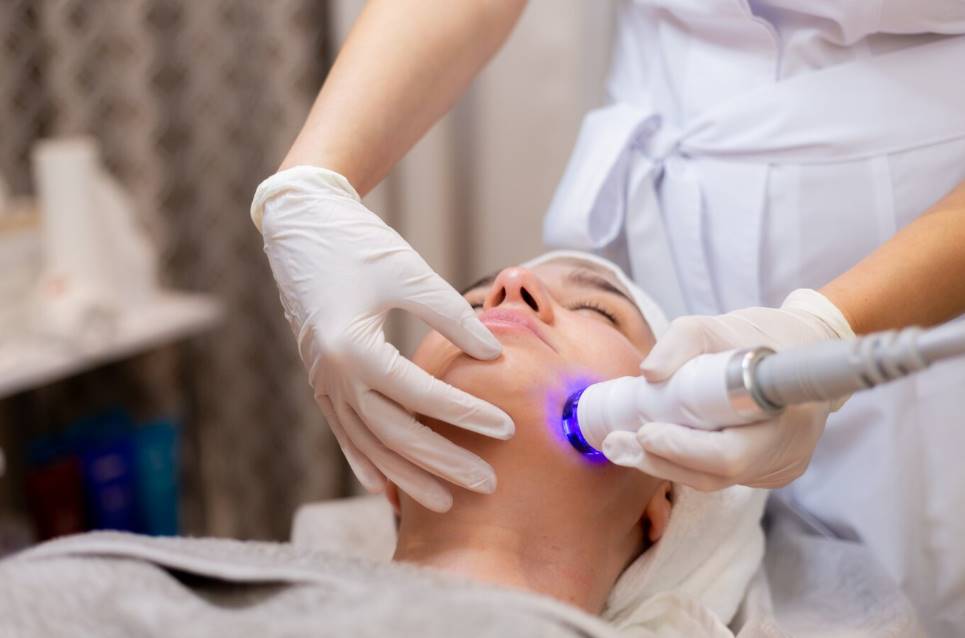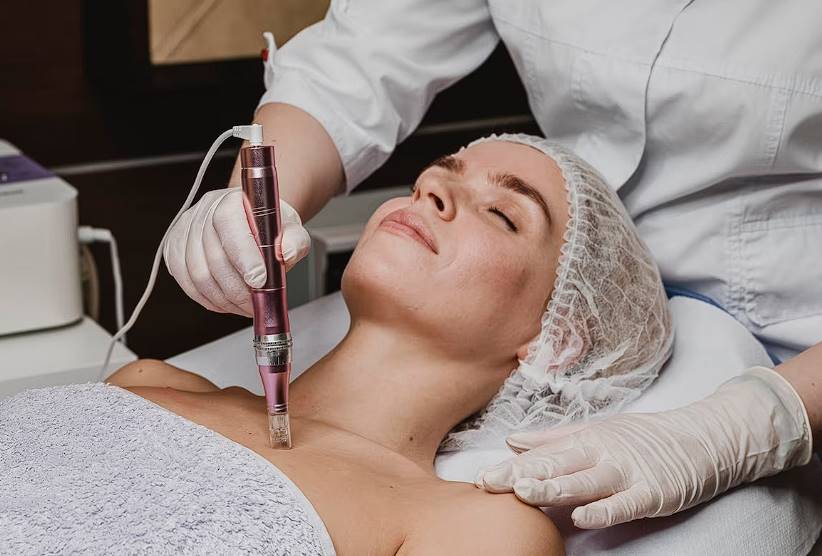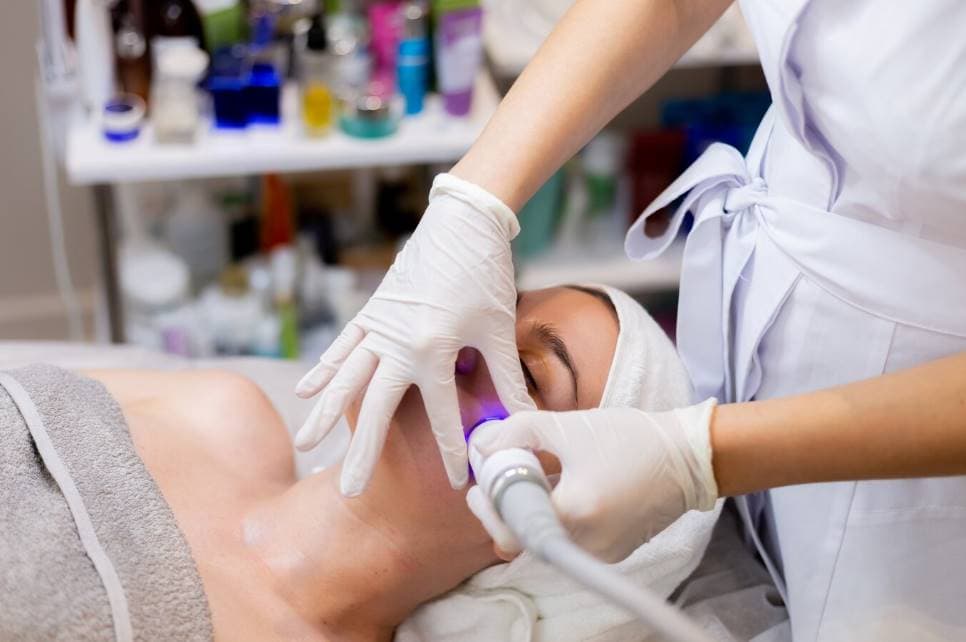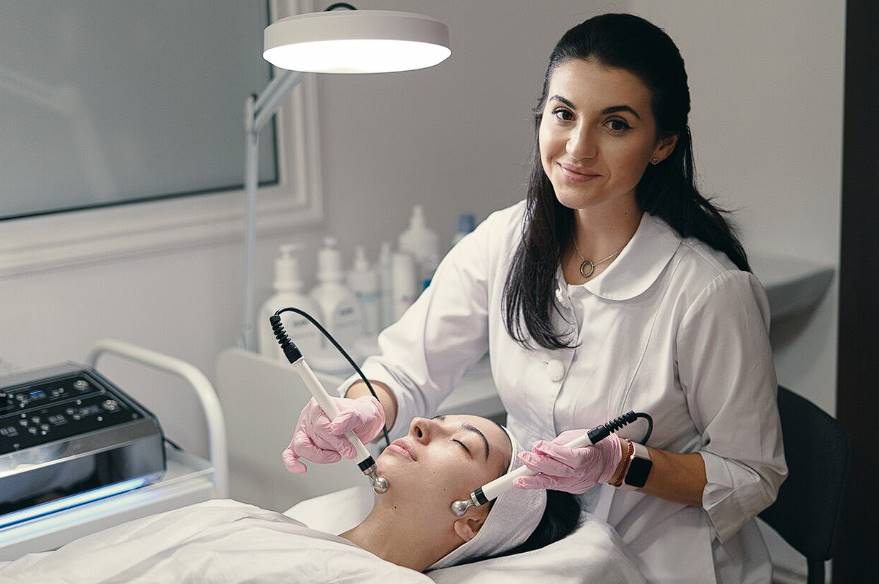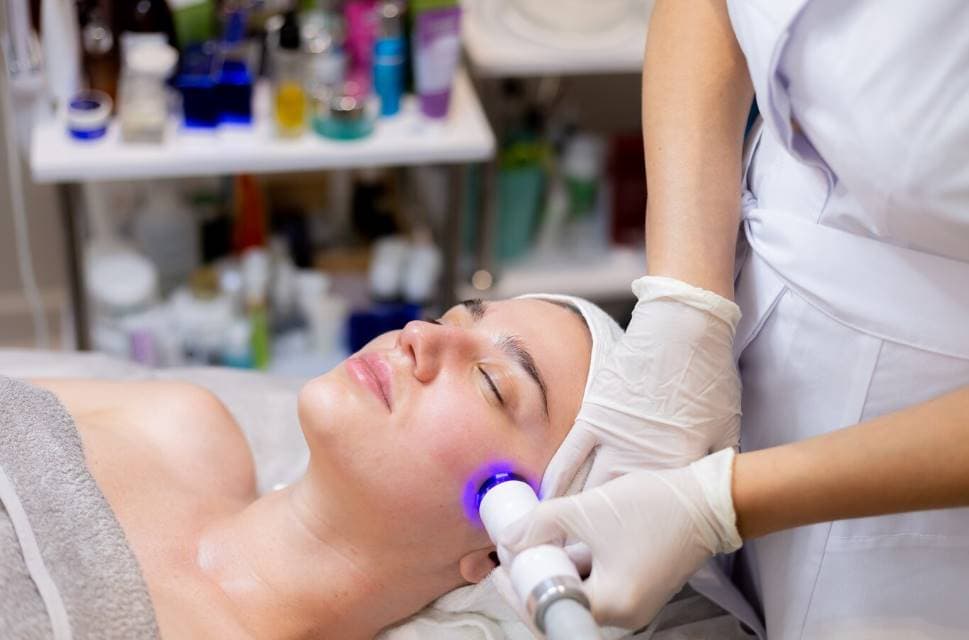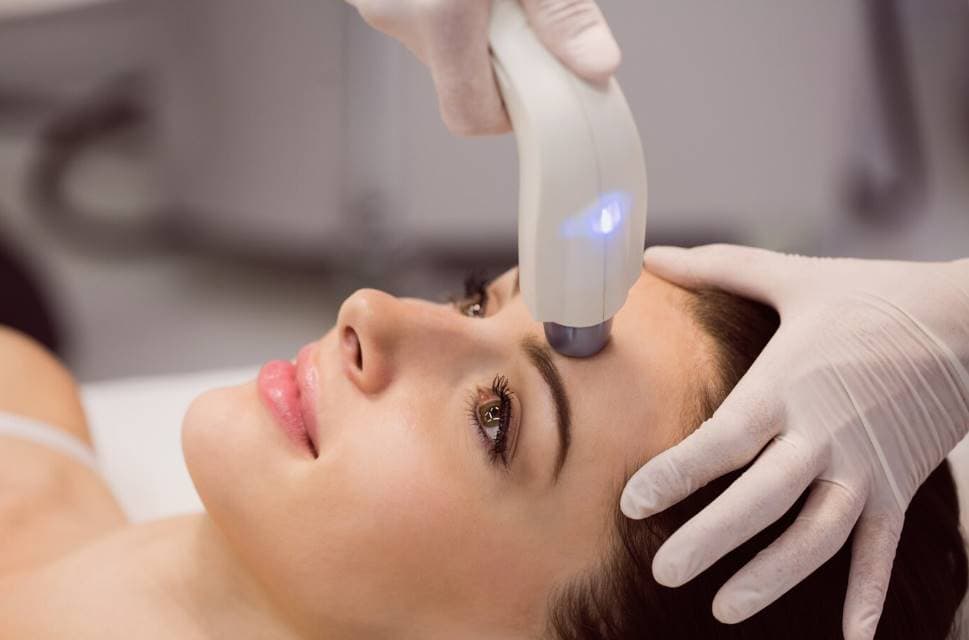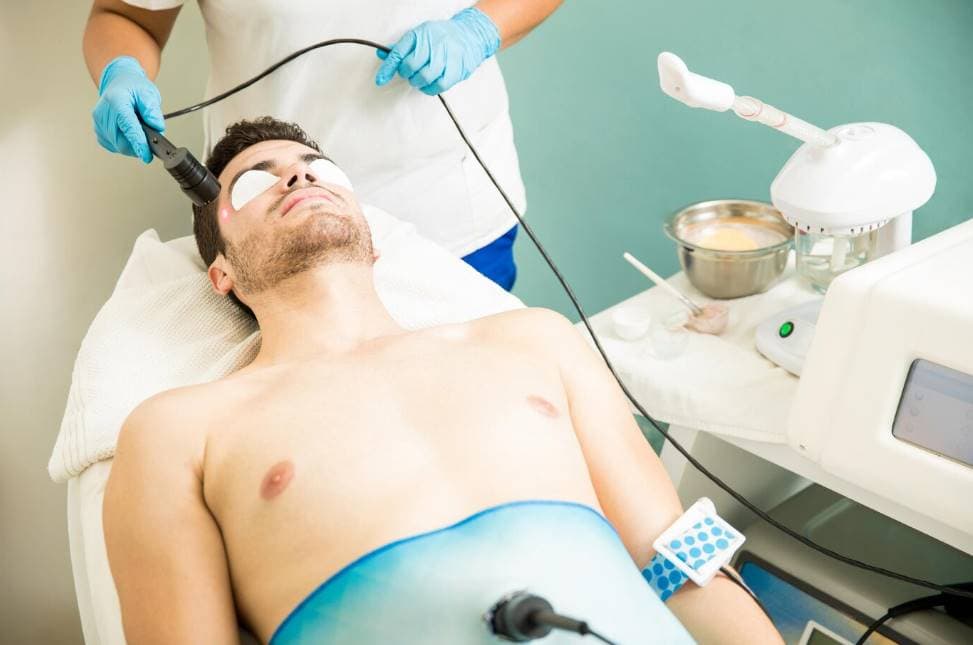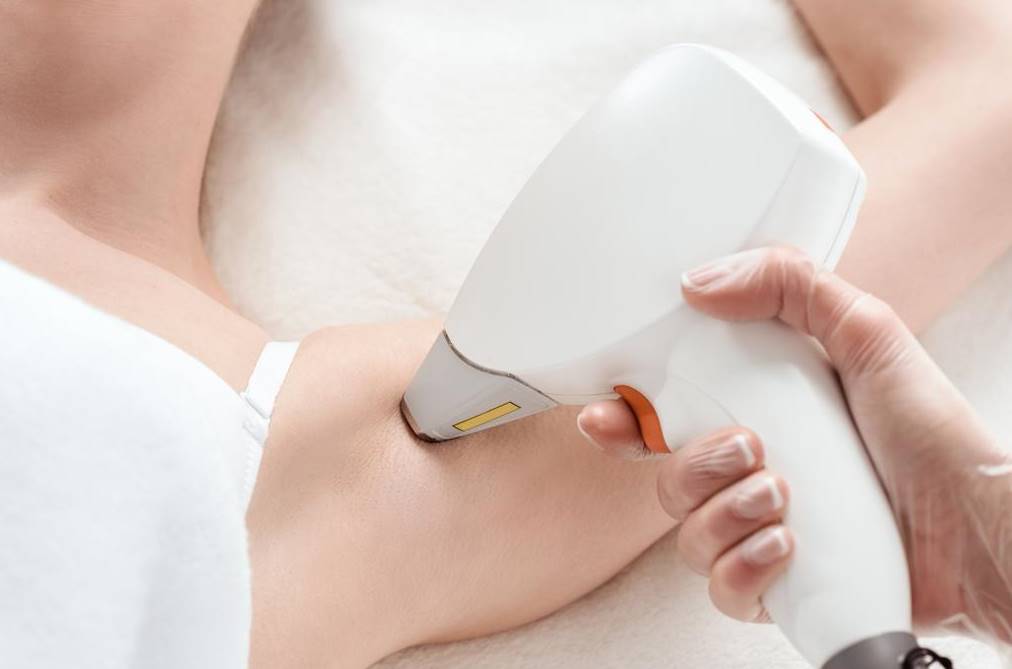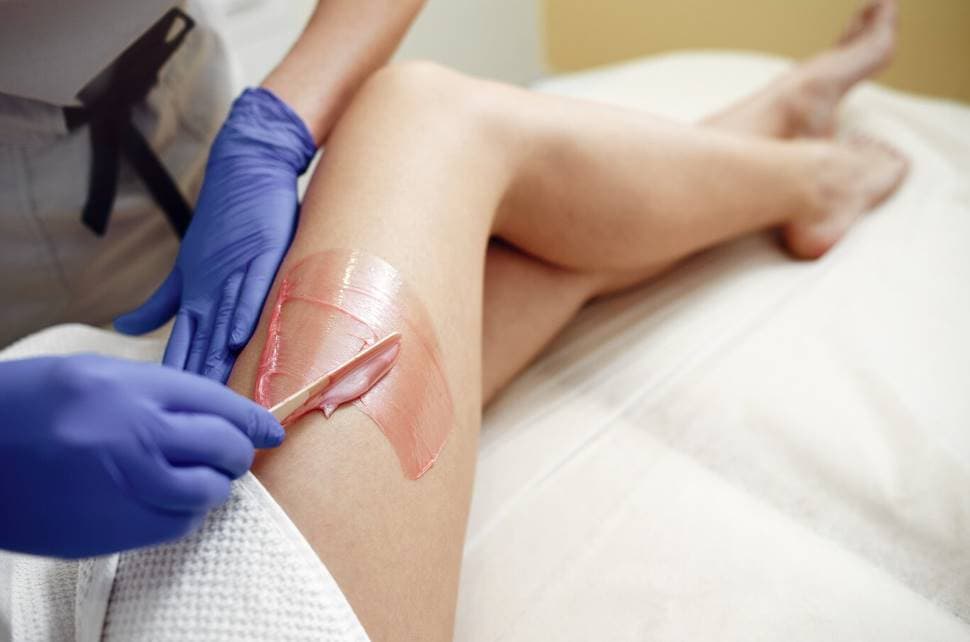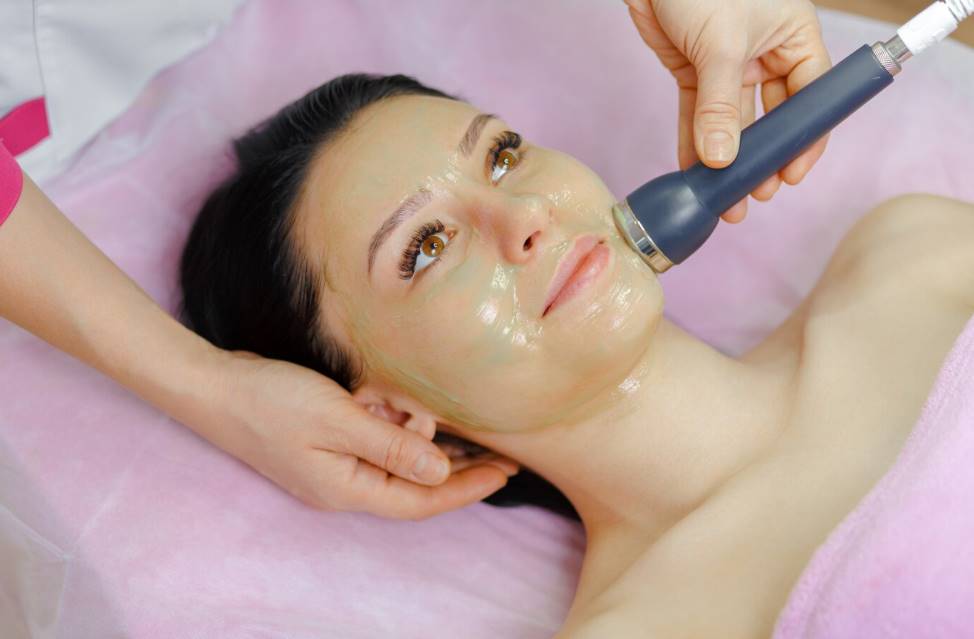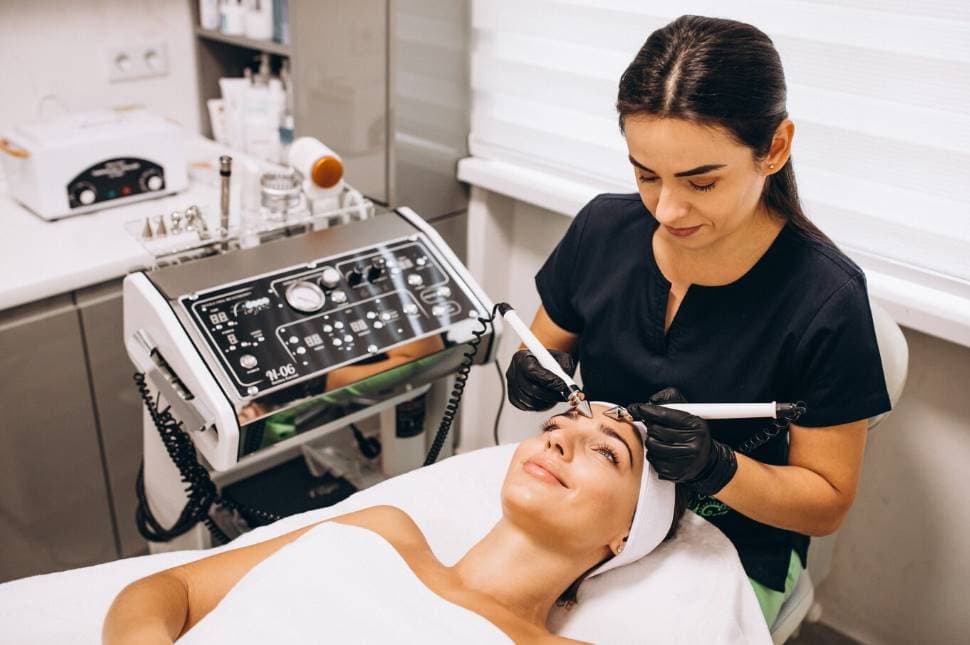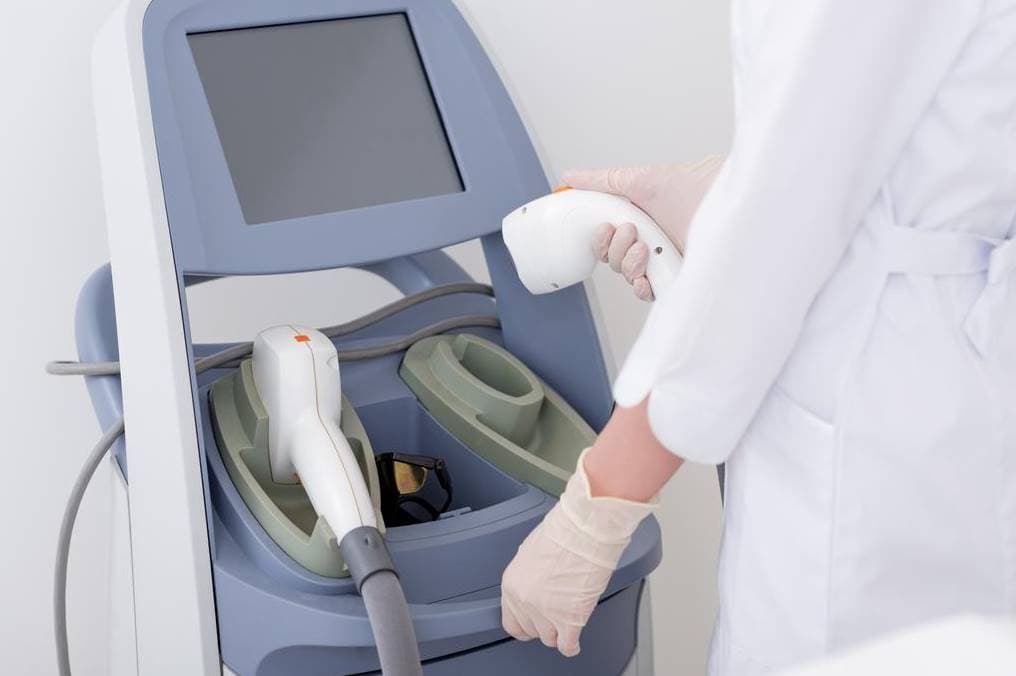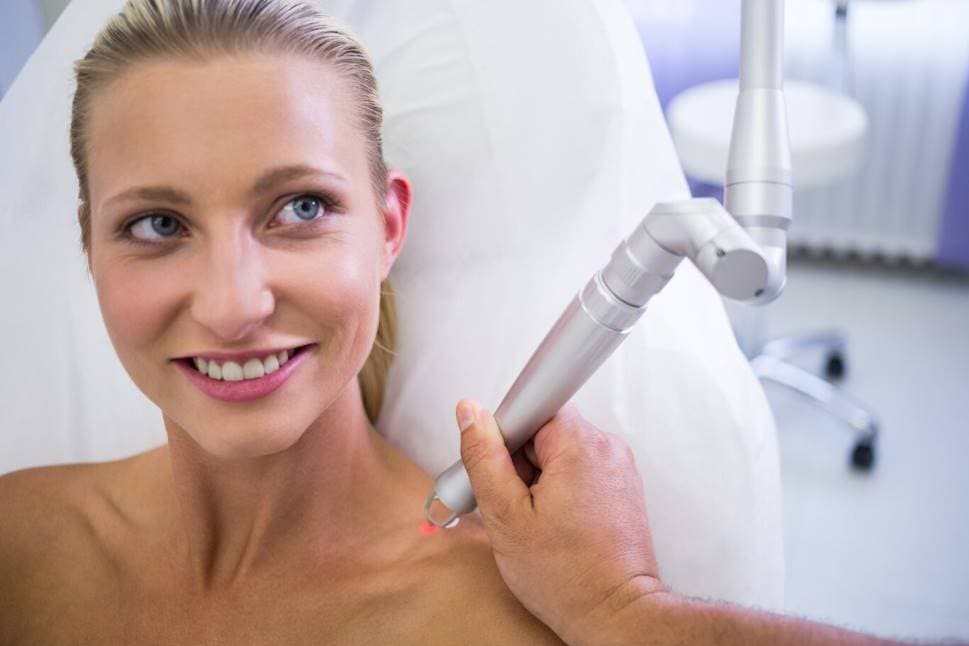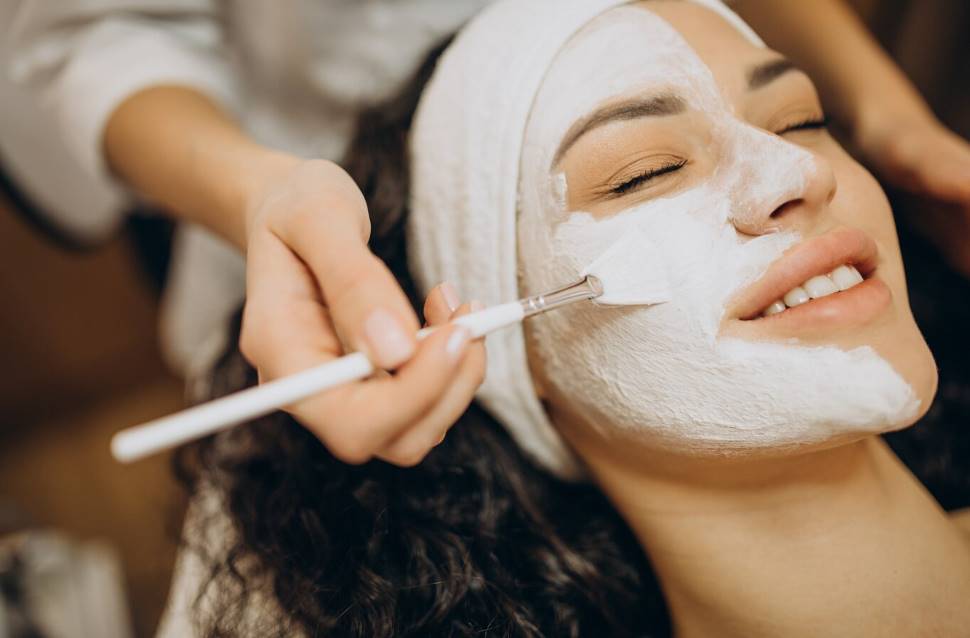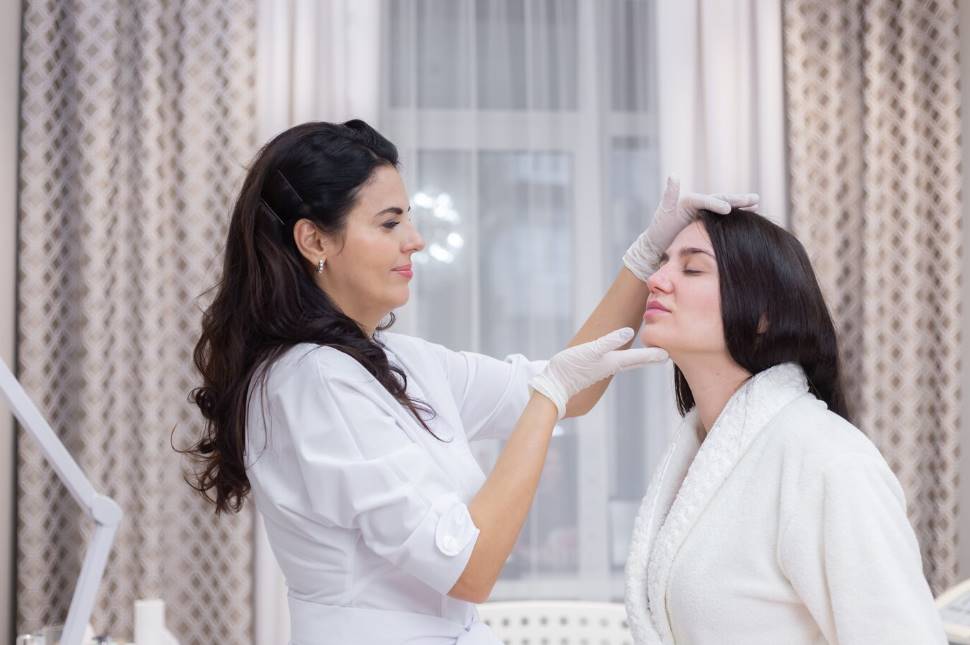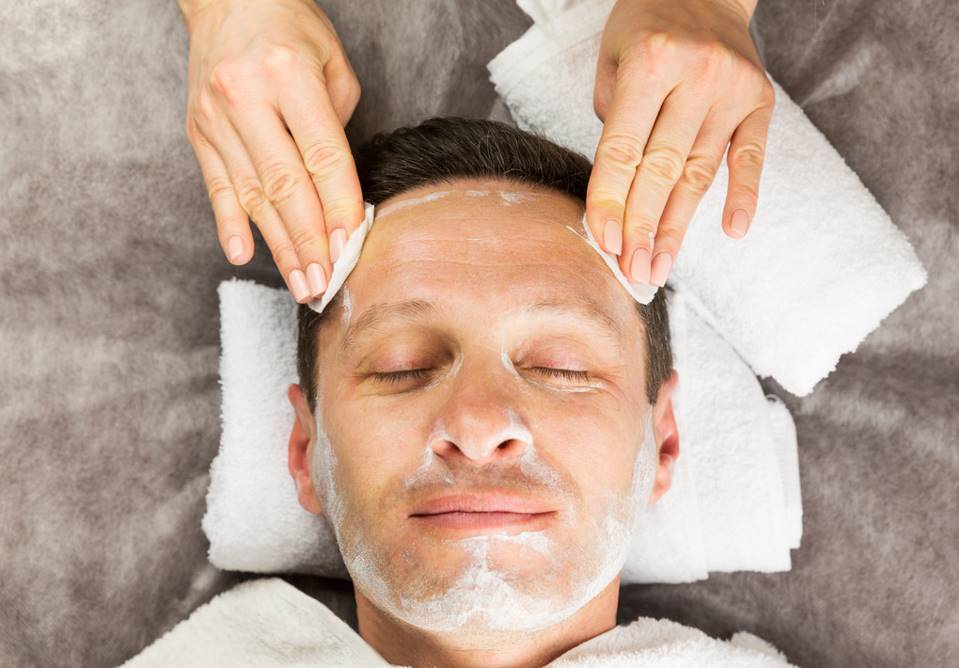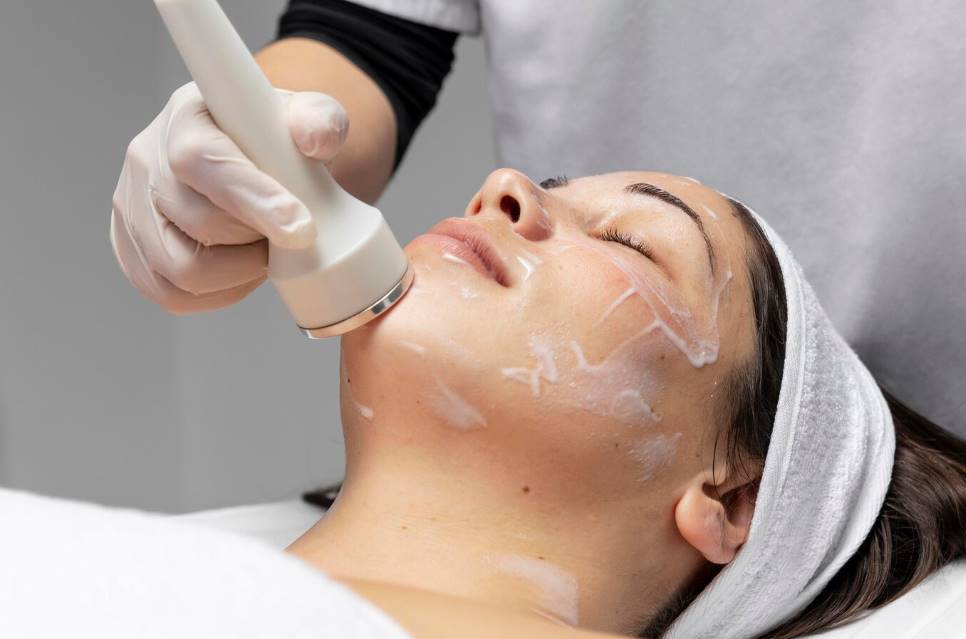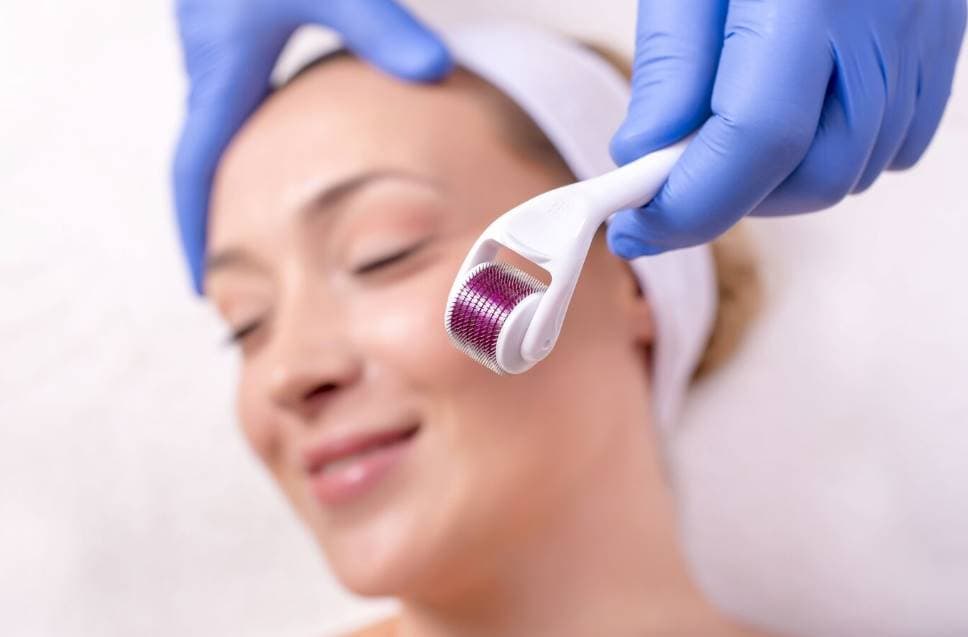Laser skin resurfacing is a common way to get smooth, young-looking skin. But is it as good as everyone says?
In reality, it depends upon what you want to accomplish. Lasers can do a lot more than get rid of wrinkles. They can fix many skin problems without going through the trouble and interruptions of surgery.
In this thorough guide, we'll look at laser skin resurfacing from every angle, including its benefits, risks, affordability, and everything else. Let's find out what this beauty procedure is about and determine if it's right for you.
What Exactly Is Laser Skin Resurfacing?

Laser resurfacing applies lasers to get rid of the look of creases and scars, even out the colour of the skin (pigmentation), tighten the skin, and get rid of both benign and malignant lesions.
The laser method uses short, intense, pulsing beams of light to treat skin that isn't smooth. During laser skin resurfacing, the skin is vaporised layer by layer to remove it precisely. Lasers take off the epidermis, the top layer of skin, and heat the dermis, the next layer down. The lasers make new collagen fibres grow, which leads to fresh skin that is easier and stronger. This trendy procedure is also called lasabrasion, laser peel, and laser vaporisation, among other names.
What Happens During Laser Resurfacing?
Laser resurfacing uses controlled light energy that breaks down the skin. In the same way that our skin heals after being hurt (like when we get a cut or a bruise), the laser stimulates growth factors and collagen to replace the "old" skin.
The light from the laser also breaks up the layers of skin, which helps to get rid of wrinkles, acne scars, and extra pigmentation caused by sun damage.
The Benefits of Laser Skin Resurfacing
Get Rid of Wrinkles and Fine Lines
Wrinkles and fine lines show that you are getting older. Laser skin resurfacing works well on lines around the lips and eyes. By getting rid of these signs of aging, you'll not only appear younger, but your face will also look better and smoother.
It Makes Collagen Grow.
Manual skin care treatments work on the top layer of the epidermis. Laser treatments, conversely, stimulate the skin's tissue at a deeper level. They target the cells underneath the skin, which speeds up collagen regeneration. Collagen makes the skin tighter, more flexible, and healthier overall.
Fix Any Brown Spots, Redness, or Changes in Colour.
Spots and changes in skin colour can be caused by the sun, getting older, or problems with how the skin makes pigment. Some clients also choose to get rid of freckles they don't like. Removing brown spots and fixing skin pigmentation can make your skin tone look more even and healthy.
Less Painful, but Great Results
Most cosmetic surgeries, like facelifts, involve making very painful cuts. But laser resurfacing of the skin is less painful and has minor side effects that are easy to deal with. Laser resurfacing of the skin can cause swelling, bacterial infections, scarring, changes in skin colour (the area could become darker or lighter), and burns from the heat of the laser.
Scars From Acne, Cuts, or Surgery Can Be Made Less Noticeable.
Scars from acne are hard to deal with as well as hard to hide. Some people even have acne as adults, which leaves their skin scarred and not smooth. Scars from accidents or procedures can also make you look and feel bad about yourself. Resurfacing the skin with lasers is a great way to remove scars and make them less noticeable, though the results can differ from person to person. Scars can sometimes be taken away completely.
Types of Laser Skin Resurfacing
Only some lasers are made the same. Learn about the different kinds and how they are used.
Ablative Laser Treatments
The key distinction between ablation and non-ablative lasers is that ablative lasers gently remove the skin's epidermis, or the outermost layer, to make changes. It works like a deep chemical peel, but it is done with more care so that skin damage is less likely to happen.
Ablative laser therapies are better for moderate lines, facial scars, and skin discolouration because they are more invasive. Even though one treatment can make a big difference, most patients need two weeks to recover and stay out of the sun. During this time, it is typical for people to have some redness and swelling.
Non-ablative Laser Treatments
Non-ablative lasers aren't as dangerous as ablative lasers because they don't remove skin. Instead, they heat the skin tissue underneath so the body will make new collagen. Since non-ablative laser therapy doesn't remove any skin, it's best for people who want to change the texture and tone of their skin with much less downtime. We suggest separate treatments based on how your skin is doing so you can see big changes. Most people don't need much time to heal between appointments to return to their normal lives after treatment.
Fractional Laser Treatments
Fractional laser treatment can be both ablative and non-ablative, which may come as a surprise. It works on both the epidermis and dermal layers of the skin. By making tiny holes in the deeper layers of the skin, fractional treatments help the body's natural healing process. People will notice the development of healthy tissue once the skin has healed.
Fractional lasers can be used to handle multiple issues all at once, such as wrinkles, acne scarring, and sun damage. Even though the healing time is short, patients may feel red or warm.
What Could Go Wrong With Laser Resurfacing?
- After laser skin resurfacing, you should expect to have some swelling. If you have swelling around your eyes, your doctor may give you oral steroids.
- Herpes simplex cold sores can come back, especially after laser resurfacing of the skin around your mouth. You can avoid this by getting an antiviral drug from your doctor. You can start taking it before the procedure and keep taking it for seven to ten days shortly after laser resurfacing.
- In areas where the laser was used, hyperpigmentation and, less often, hypopigmentation can happen. Bleaching cream can help the pigment fade faster in too-dark areas. You should also use broad-spectrum sun protection for a few weeks before and after treatment to keep your skin from changing colour.
- You can also avoid bacterial infections by applying an antibiotic before surgery and taking it for seven to ten days afterwards.
- Scarring is rare after skin laser resurfacing, but it can happen in areas where the laser was used.
- Milia, known as small white bumps, may show up in the areas where the laser was used while the skin heals, which can take up to a month. You can get rid of these with a washcloth and some gentle cleaning.
Laser or Nothing?
Laser resurfacing isn't the only way to treat your skin to give you the desired results. Try microdermabrasion or a chemical peel if it sounds too painful for you. This type of treatment is a face therapy that removes several layers of dead tissue and cells and reveals fresh new skin. This is comfortable and relaxing.
A chemical peel can get rid of fine lines in the eyes and close to the mouth, treat facial wrinkles resulting from sun damage and getting older, make mild scars look better, treat some types of acne, get rid of age spots, spots, and dark patches, and make the skin look and feel better overall. When a chemical solution is put on the skin, it peels off (sounds fun, doesn't it?) to reveal the fresh skin underneath.
What to Expect During the Procedure and Afterwards
A plastic surgeon or a dermatologist is the one who does laser resurfacing. Since it is an outpatient procedure, you won't have to stay in the hospital overnight.
The doctor can treat the wrinkles surrounding your eyes, mouth, and forehead separately, or they may treat your whole face. For small spots, the doctor will use a local anaesthetic to numb the area and may also put you to sleep. You may need general anaesthesia if your whole face is being worked on.
Treating only parts of the face takes approximately thirty to forty-five minutes. It can take a maximum of two hours to treat the whole face.
After the laser treatment, the doctor will put a bandage on the area. After 24 hours, you must wash the treated areas four to five times a day before you put on an ointment like petroleum jelly to keep scabs from forming. In the initial 24 to 48 hours, your doctor may also tell you to use a cooling wrap or a wrapped icy pack for fifteen minutes each hour to two hours as needed.
It is normal for the skin to swell after laser skin resurfacing. If you have swelling around your eyes, your doctor may give you steroids. Using an extra pillow when you sleep at night can also help reduce swelling. After the procedure, you may feel itchy or stingy for 12 to 72 hours. After the procedure, your skin will dry and peel in five to seven days.
Depending on what was fixed, healing usually takes between 10 and 21 days. Once the skin heals, you can use oil-free makeup to cover up the redness. Between two and three months, the redness should go away.
Laser Skin Resurfacing Means Taking Care of the Area.
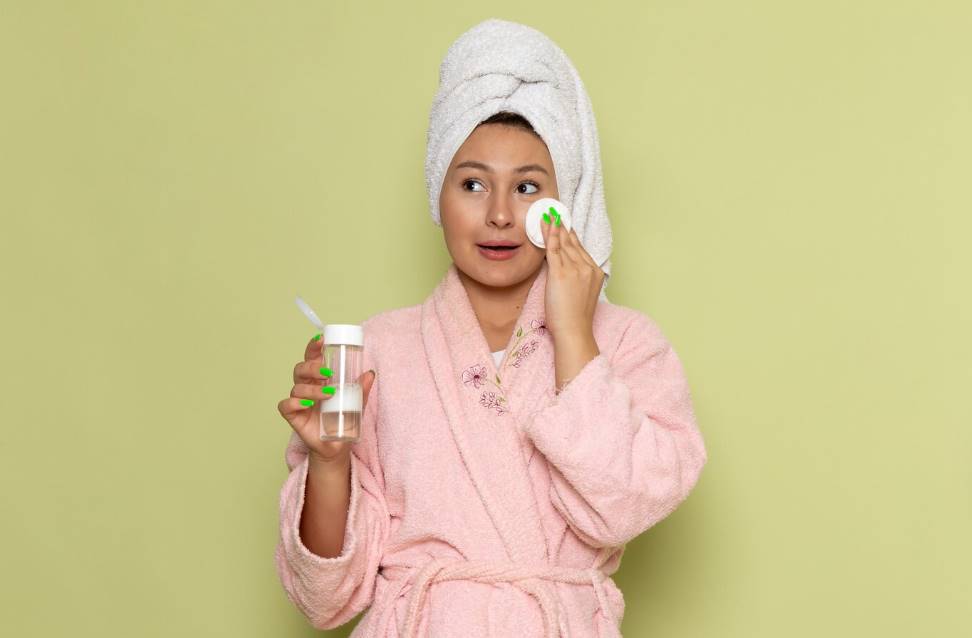
You should use a mild cleanser and Aquaphor or Vaseline the day after treatment to help your skin heal. Use a mild cleanser for the next two weeks after the treatment.
After the area has healed from the treatment, it may itch or feel dry. This will get better over time. Using moisturisers that do not irritate the skin may help.
Use a sunscreen with an SPF of 50 or higher that protects against UVA and UVB and a sun blocker like aluminium oxide or titanium dioxide to protect your skin. After the first two weeks of staying out of the sun, you should wear SPF 30 or higher every time you go out for up to six months.
Do You Qualify for Laser Skin Resurfacing?
Resurfacing laser treatments could help if your skin has small flaws that make it look not good. You do not have to live with spots, wounds, and wrinkles. Instead, care for your skin to make it look healthy and young.
Conclusion
Laser skin resurfacing is a common treatment that uses lasers to get rid of wrinkles, scars, uneven skin colour, tighten the skin, and get rid of both benign and cancerous lesions. The process uses short, intense, pulsing beams of light to break down the skin layer by layer. This causes growth factors and collagen to replace the "old" skin. It also helps get rid of wrinkles, scars from acne, and extra colour on the skin that comes from sun damage.
Laser skin resurfacing has many benefits, such as getting rid of wrinkles and fine lines, making collagen grow, fixing brown spots, redness, or colour changes, and hurting less than other cosmetic surgeries. However, it can cause swelling, bacterial illnesses, scarring, changes in skin colour, and burns from the laser's heat.
There are two kinds of laser skin resurfacing: ablative laser treatments, which gently remove the epidermis to make changes, and non-ablative laser treatments, which heat the skin tissue underneath to make new collagen. Ablative laser treatments are better for treating mild wrinkles, facial scars, and skin discolouration, but patients usually need to stay out of the sun for two weeks to heal and recover.
In conclusion, laser skin resurfacing has many benefits, such as getting rid of wrinkles, fine lines, and scars caused by acne, cuts, or surgery. For personalised treatment plans, it's best to talk to a dermatologist.
Fractional laser treatments can be either ablative or non-ablative, and they can work on both the epidermis and the dermis. They help the body heal itself by making tiny holes in lower layers, which encourages the growth of healthy tissue. These treatments can help with things like lines, acne scars, and damage from the sun.
Patients who have laser skin resurfacing may have swelling, which can be treated with oral painkillers or antiviral drugs. In places where the laser was used, the skin may get darker or lighter, and medicines can stop bacterial infections. Scars are uncommon, but they can happen where the laser was used. To get the effects you want, you can also use microdermabrasion or chemical peels.
Laser resurfacing is an outpatient treatment that can take anywhere from 30 to 45 minutes for small spots to two hours for the whole face. It is done by a plastic surgeon or a dermatologist. The treated area is bandaged after the process, and it should be washed four to five times a day. During the first 24 to 48 hours, you can use cool wraps or ice packs.
After laser skin resurfacing, it is normal for the skin to swell and itch or sting for 12 to 72 hours. Most wounds heal in 10 to 21 days, and the swelling should go away in two to three months.
Patients should use light cleansers, moisturisers, sunscreen with an SPF of 50 or higher, and sun blockers to take care of the area. People with small skin flaws can use resurfacing laser treatments to make their skin look better and younger.
Content Summary
- Laser skin resurfacing is popular for achieving smooth, youthful skin.
- Its effectiveness depends on individual goals and expectations.
- This treatment offers an alternative to invasive surgeries.
- Lasers address a range of skin problems beyond just wrinkles.
- The guide provides an in-depth look at laser skin resurfacing.
- This treatment can eliminate creases, scars, and pigmentation issues.
- Lasers vaporise the skin layer by layer, offering precision.
- The procedure targets both the epidermis and the dermis.
- The treatment stimulates the growth of new collagen fibres.
- Other names for the procedure include lasabrasion and laser peel.
- Laser resurfacing works by breaking down the skin layers.
- The light from the laser can treat wrinkles, scars, and pigmentation.
- One of its main benefits is wrinkle reduction.
- The procedure is particularly effective for lines around lips and eyes.
- Laser treatments go deeper than manual skincare, stimulating collagen.
- The process can fix skin colouration issues, like brown spots.
- Laser resurfacing offers significant results with less pain than surgeries.
- Potential side effects include swelling, scarring, and skin colour changes.
- It can make scars from acne, cuts, or surgery less visible.
- The effectiveness on scars can vary between individuals.
- There are different types of laser resurfacing treatments.
- Ablative lasers remove the skin's outer layer and offer precision.
- They are recommended for moderate lines and scars.
- Recovery from ablative laser therapies may take up to two weeks.
- Non-ablative lasers don't remove skin but stimulate collagen production.
- Fractional lasers treat both the epidermis and dermal layers.
- Fractional treatments can address wrinkles, scars, and sun damage.
- Post-laser treatment, some swelling is expected.
- Cold sores can reoccur after laser resurfacing around the mouth.
- Hyperpigmentation or hypopigmentation can occur in treated areas.
- Bacterial infections can be prevented with antibiotics post-surgery.
- Milia, or small white bumps, might appear during the healing process.
- Laser resurfacing isn't the only skin rejuvenation method.
- Alternatives include microdermabrasion and chemical peels.
- Chemical peels also remove dead tissue, revealing fresh skin underneath.
- They can address fine lines, sun damage, and certain acne types.
- Laser resurfacing is typically an outpatient procedure.
- The treatment can be targeted or applied to the entire face.
- Small areas require local anaesthesia, while full-face treatments may need general anaesthesia.
- Treating specific facial areas can take up to 45 minutes.
- Post-treatment, bandages are applied to the treated areas.
- Regular washing and ointment application can prevent scab formation.
- Cooling wraps might be suggested to manage post-procedure swelling.
- Skin typically peels in five to seven days post-treatment.
- Full healing after laser skin resurfacing takes between 10 and 21 days.
- Once healed, oil-free makeup can camouflage any residual redness.
- Proper post-treatment care is vital for best results.
- Mild cleansers and specific ointments are recommended post-treatment.
- It's crucial to protect the treated area from the sun.
- Regular moisturising and avoiding potential skin irritants are also essential.
Frequently Asked Questions
Most people say that both types of laser skin resurfacing are "Worth It," citing benefits like fewer fine lines and wrinkles, a more even skin tone, softer skin, a smoother texture, less scarring, and tighter, firmer skin.
Burns or additional harm from the laser heat is a risk of the procedure. A wound. Changes in the colour of the skin, such as darker or lighter patches.
Is the treatment with a laser scar permanent? Scars won't come back after laser scar treatment, but other things, like age, UV rays, and lifestyle, can change how the skin looks overall.
Is the treatment with a laser scar permanent? Scars won't come back after laser scar treatment, but other things, like age, UV rays, and lifestyle, can change how the skin looks overall.
Don't drink alcohol, eat spicy food, or smoke for 24–48 hours before and after treatment. These things can make bruising, swelling, and irritation worse. Don't get too much caffeine.
